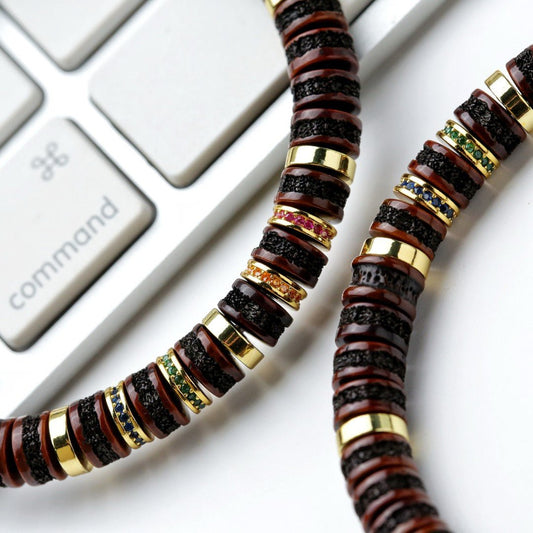
Within the meticulous design among Tibetan spiritual traditions are present two celebrated items: the elaborated thangka and crafted bodhi seed. Each, uniquely expressed, facilitates linkages to metaphysical clarity. The thangka, a hand-painted tableau, delineates sacred characters, spiritual mandalas, or traditional chronicles, assisting meditative practice.
Conversely, the bodhi bead, often crafted from noble stones, grain, grains, or hard tissue, is a tangible reminder of Buddha's epiphany under the bodhi tree. Holding these beads during prayer or meditation helps to focus the mind.
- Collectively, the thangka and the bodhi bead manifest the synergy between expression and belief. They offer a tangible link to the historic sagacity of Tibetan Buddhism.
Myths Carved in Camel Bones
Amidst long-forgotten periods, historic treasures whisper tales pertaining to a world long faded. These are not treasured objects associated with shadowed empires, but unpretentious camel bones marked with glyphs that preserve the hidden truths of a bygone period. Single shards carry the echo arising from a life lived, a journey completed, and a connection to the hallowed wisdom wherein encompasses us all.
- These fragments
- Fragments
- Symbolize
Unlocking the Symbolism within Thangka Masterpieces
Tangkas are vibrant paintings on canvas, meticulously crafted by Tibetan artists to depict divine figures and scenes from Buddhist traditions. Each detail within a thangka is laden with significance, forming a complex tapestry of visual narratives that guide the viewer on a meditative journey. The tints used in thangkas are not merely aesthetic choices but carry intrinsic connotations, exemplifying different aspects of the Buddhist beliefs. From the imposing figures to the intricate patterns, thangkas offer a glimpse into the rich world of Tibetan Buddhism, inviting us to ruminate upon its knowledge.
- Classic thangka art often depicts key Buddhist figures such as Buddha Shakyamuni, Bodhisattvas like Avalokiteshvara and Manjushri, and enlightened beings from various factions of Tibetan Buddhism.
- Through these representations lies a wealth of knowledge that can be accessed by those who explore the symbolic language of thangkas.
Siddhartha's Path to Enlightenment: Embodied in Beads and Bone
Upon the winding course to salvation, the Buddha used emblems imbued with profound significance. The very bead and element held within them the fundamentals of his wisdom, demonstrating glimpses into the unfolding of reality. By means of their profile, the Buddha communicated profound truths that elude the realm of earthly perception.
From specific prayer beads, crafted from sacred materials, issued vibrations that echoed with the delicate forces within. The remains of a sentient, meticulously transformed into charms, served as tangible indicators of the impermanence innate to all creatures.
Thangkas: Windows into Himalayan Spirituality
Thangkas glowing paintings on cloth serve as dynamic representations of Himalayan spirituality. These intricate works of art, meticulously created with precise brushstrokes, depict a vast array consisting of Buddhist deities, mandalas, and scenes from time-honored scriptures. Each thangka is a spiritual map for meditation and contemplation, offering awareness into the profound teachings of Buddhism.
- They are often used in ritual ceremonies as part of
- inspiring states of spiritual realization.
- Thangkas exist not merely decorative objects but rather entries into the rich and intriguing world of Himalayan spiritual traditions.
Discover the Depth of Bodhi Beads: A Path to Mindfulness and Compassion
Each sphere on a bodhi bead mala whispers tales of ancient wisdom, guiding us on a venture through the tranquil waters of mindfulness. As we grasp these intricately designed beads, our fingers trace the contours of each one, anchoring our alertness in the present moment. The gentle heft of the beads against our palms serves as a tangible reminder to take a breath, fostering a sense of composure.
- For every bead that passes between our fingers, we grow compassion, extending it first to ourselves and then outward to the world.
- Eastern religions teaches us that mindfulness is a discipline that requires patience and endurance.
By the use of the rhythmic repetition of mantra or simply the mindful tallying of the beads, we detach from the relentless chatter of the mind.
The practice involving bodhi beads is a gentle invitation to reconnect our connection with ourselves and the world around us.
Focused Energy: Producing Camel Bone Bracelets for Higher Awareness
Intention is a powerful force in our lives, shaping our experiences and guiding us towards our foreordained route. When we combine this intention with the ancestral experience of crafting a camel bone bracelet, we create a potent synergy that can intensify our spiritual growth.Camel bone remains deeply resonant, representing stamina. Its natural beauty and enduring grace serve as a constant reminder of the core vitality within each of us.By scrutinizing each piece, pour intentions into the design. With every knot or stitch, we implant our hopes, dreams, and aspirations for spiritual evolution. This act of creation becomes a meditative practice, merging us with our inner wisdom and guiding us on a pilgrimage of understanding.- Observe how the shade and grain complement your purpose.
- Sense the spiritual currents channeling within your crafting.
- Keep it close as a symbol of your evolving journey.
The Fascinating Story of Camel Bone in Buddhism
In the rich tapestry embedded in Buddhist tradition, artifacts often hold profound symbolic meaning. Amidst these varied objects, camel bone stands out as a unique and absorbing element. Across history, this material has been applied in the crafting for various Buddhist relics, each imbued with specific denotations.
- Considered as a symbol of resilience and strength due to the camel's ability to withstand in harsh environments, camel bone often stands for spiritual fortitude.
- Additionally, the color and texture concerning camel bone are believed to some to hold auspicious connotations, symbolize purity and serenity.
Consequently, camel bone has become a prized part of Buddhist lineage, serving as a tangible relation to the profound teachings of this ancient faith.
Thangka Compositions: Acts of Holiness
Within the ethereal realm of Tibetan Buddhism, Thangka paintings emerge as sacred portals to enlightenment. These exquisite works, meticulously crafted by skilled artists known as thangkapa, depict a myriad consisting of vibrant deities, celestial beings, and mythical creatures. Each brushstroke imparts profound spiritual significance, narrating ancient tales and philosophical notions.
- Covering a vast compendium of Buddhist iconography, Thangkas serve as both devotional objects and instructional tools. Zealous practitioners gaze upon these paintings during rituals and meditations, seeking to gain spiritual wisdom.
- Intricately adorned with intricate details decorated with numerous vibrant hues, Thangkas are considered windows into the divine. Every one painting acts as a symbolic representation of the Divine Figure's teachings and the path to liberation.
By the use of their potent imagery and symbolism, Thangka paintings offer a glimpse into the rich sacred traditions of Tibet. They are a testament to the enduring artistry of Tibetan art and its profound ability to invigorate.
Embracing the Duality: Thangkas and the Cycle of Life and Death
Thangkas, these vibrant woven scrolls from Tibet, offer a profound reflection on the transient nature of existence. Each intricate drawing depicts deities Fengshui and beings engaged in the developing course of life and death, a tapestry of birth, growth, impermanence, and reawakening. The artists skillfully integrate these concepts within the thangka's setting, highlighting the cohesion of all things. Through vivid icons, they invite us to meditate on our own continuity. The cycle endures, a tempo of coming and going, reinforcing the preciousness of each moment. By embracing this duality, thangkas teach us to appreciate the beauty in both life's joys and sorrows.Bands of Faith: The Significance of Bracelets in Buddhist Practice
In the intricate tapestry of Buddhist practice, seemingly straightforward objects often hold profound meaning. Among these are bracelets, which serve as tangible representations of devotion and commitment to the doctrine of Buddha. Worn on the wrist, a bracelet functions as a constant reminder of one's aspirations and ambitions. It can express the impermanence of life, stimulating practitioners to remain grounded in the present moment. Some bracelets may contain sacred signs, such as mantras or the names of Buddhas, which are acknowledged to summon positive energy and safety. Others tend to be made from constituents with spiritual significance, like sandalwood or lotus seeds, amplifying the bracelet's potency. Ultimately, the significance of a Buddhist bracelet extends far beyond its physical form. It becomes a powerful tool for thought, a reminder to live in harmony with the teachings of Buddha, and a wellspring of one's unwavering belief.